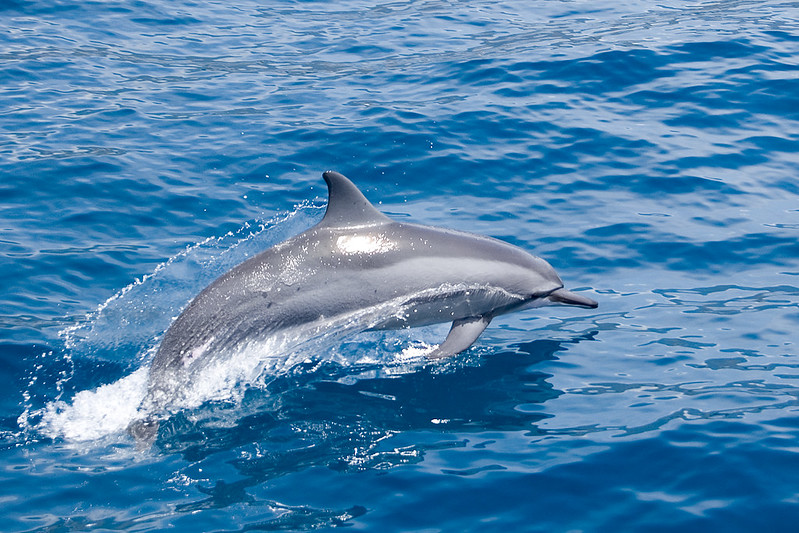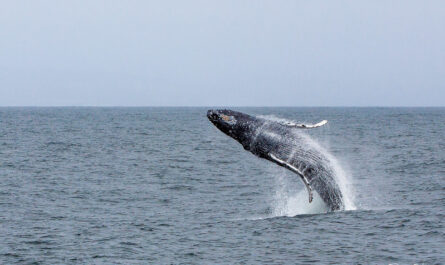The Atlantic Ocean, spanning from the warm, tropical waters of the equator to the icy regions of the Arctic, is home to a remarkable diversity of dolphin species. These intelligent and social marine mammals captivate scientists and wildlife enthusiasts alike with their complex behaviors, acrobatic displays, and wide-ranging migratory patterns. From the playful bottlenose dolphins of the tropics to the elusive white-beaked dolphins of colder regions, the dolphins of the Atlantic are vital to the marine ecosystem and symbolize the health of our oceans.
This article explores the fascinating world of Atlantic dolphins, examining their species diversity, unique behaviors, migration patterns, and the conservation challenges they face in an ever-changing ocean.
Dolphin Species of the Atlantic Ocean
The Atlantic is home to a variety of dolphin species, each uniquely adapted to its specific environment. These species range in size, diet, and behavior, but all play critical roles in the ocean’s food web.
1. Bottlenose Dolphin (Tursiops truncatus)
Perhaps the most iconic dolphin species, the bottlenose dolphin is widely distributed throughout the Atlantic, from warm tropical waters to temperate regions. Recognized for their curved dorsal fins and “smiling” appearance, bottlenose dolphins are highly social and often seen in pods ranging from a few individuals to several dozen.
- Key Characteristics: Bottlenose dolphins are known for their intelligence, often displaying problem-solving skills and the use of tools, such as sponges to protect their snouts while foraging.
- Habitat: Found in coastal areas, estuaries, and open ocean regions.
- Diet: Primarily fish, squid, and crustaceans.
2. Atlantic Spotted Dolphin (Stenella frontalis)
The Atlantic spotted dolphin is native to the tropical and subtropical waters of the Atlantic. These dolphins are named for the unique spots that develop on their bodies as they age, giving them a distinct appearance.
- Key Characteristics: Known for their energetic acrobatics and curious nature, Atlantic spotted dolphins are often seen riding the bow waves of boats.
- Habitat: Prefers warmer waters, especially around the Bahamas, Gulf of Mexico, and the Canary Islands.
- Diet: Fish and squid, often hunted at night.
3. Common Dolphin (Delphinus delphis)
The common dolphin, also known as the short-beaked common dolphin, is a widespread species found in both tropical and temperate Atlantic waters. It is recognized for its striking yellow and gray hourglass pattern on its sides.
- Key Characteristics: Known for their high-speed swimming and frequent breaching.
- Habitat: Open ocean and coastal areas, often in large pods.
- Diet: Sardines, mackerel, and other schooling fish.
4. White-Beaked Dolphin (Lagenorhynchus albirostris)
White-beaked dolphins are native to the colder waters of the North Atlantic, often seen off the coasts of Canada, Greenland, Iceland, and Northern Europe.
- Key Characteristics: These sturdy dolphins have a robust body and a distinctive white beak.
- Habitat: Cold waters, often near continental shelves and fjords.
- Diet: Fish such as herring and cod, as well as squid and crustaceans.
5. Risso’s Dolphin (Grampus griseus)
Risso’s dolphins are found in temperate and tropical regions of the Atlantic. These dolphins are easily identified by their rounded heads and heavily scarred bodies, the result of social interactions and encounters with prey.
- Key Characteristics: Solitary or found in small groups; scars are a hallmark of this species.
- Habitat: Deep offshore waters, often near underwater canyons.
- Diet: Primarily squid.
Dolphin Behavior in the Atlantic
Dolphins are highly social and intelligent creatures, exhibiting a range of behaviors that showcase their adaptability and complex communication.
Social Structure and Communication
Dolphins live in groups called pods, which can range from a few individuals to hundreds in larger aggregations called superpods. Pod structures vary by species but generally consist of closely related individuals, such as mothers and calves.
- Communication: Dolphins use a combination of clicks, whistles, and body language to communicate. Some species, like bottlenose dolphins, even use unique “signature whistles” to identify themselves, similar to names in humans.
- Social Behaviors: Play is an essential part of dolphin life, serving as a way to strengthen social bonds, practice hunting skills, and relieve stress. Dolphins are often seen leaping, tail-slapping, and bow-riding waves.
Feeding Strategies
Dolphins employ a variety of feeding techniques, often working together to catch prey. These strategies include:
- Bubble-Net Feeding: A coordinated effort where dolphins create a “net” of bubbles to herd fish into a concentrated area for easier capture.
- Strand Feeding: Observed in some bottlenose dolphin populations, this behavior involves chasing fish onto shallow shorelines, where they are temporarily stranded to catch prey.
- Echolocation: Dolphins use echolocation to locate prey, emitting sound waves that bounce off objects and return to provide information about size, distance, and texture.
Migration Patterns of Atlantic Dolphins
Dolphins in the Atlantic display a range of migratory behaviors, often linked to changes in water temperature, prey availability, and breeding cycles.
- Tropical Species: Dolphins like the Atlantic spotted dolphin tend to remain in warmer waters year-round, making shorter migrations based on prey movements.
- Temperate and Cold-Water Species: Species like the white-beaked dolphin migrate seasonally, often traveling to warmer waters during winter months and returning to feeding grounds in colder regions during summer.
- Long-Distance Travelers: Some common dolphins are known to undertake migrations spanning thousands of miles, following the movement of large fish schools such as sardines and anchovies.
These migrations highlight the dolphins’ adaptability and the interconnectedness of marine ecosystems across the Atlantic.
Conservation Challenges for Atlantic Dolphins
Despite their adaptability and resilience, dolphins face numerous threats in the Atlantic, driven largely by human activity.
1. Bycatch and Fishing Practices
Accidental entanglement in fishing gear, known as bycatch, is one of the leading causes of dolphin mortality. Dolphins often become trapped in trawl nets, gillnets, and longlines while chasing prey near fishing vessels.
2. Pollution
The Atlantic is increasingly impacted by pollution, including plastic waste, chemical runoff, and noise pollution from shipping and offshore drilling. Dolphins can ingest or become entangled in plastic debris, while noise pollution disrupts their echolocation and communication.
3. Climate Change
Rising ocean temperatures and changes in prey availability caused by climate change affect dolphin migration patterns and habitats. Some species may be forced to adapt to new environments, while others may struggle to find suitable conditions.
4. Habitat Degradation
Coastal development, including tourism infrastructure and industrial activities, threatens dolphin habitats, particularly for species that rely on estuaries and shallow coastal waters.
Conservation Efforts for Atlantic Dolphins
Recognizing the importance of dolphins to marine ecosystems, various conservation initiatives are in place to protect these species.
- Marine Protected Areas (MPAs): Designated MPAs in the Atlantic help safeguard critical habitats, providing safe areas for dolphins to feed, breed, and migrate without human interference.
- Sustainable Fishing Practices: Efforts to reduce bycatch include using dolphin-safe fishing gear, such as pingers, which emit sounds to deter dolphins from approaching fishing nets.
- Public Awareness and Ecotourism: Dolphin-watching tours promote awareness and generate economic incentives for conservation. Ethical guidelines ensure minimal disruption to dolphin behavior during tours.
- Research and Monitoring: Organizations like the Atlantic Marine Mammal Foundation conduct research to better understand dolphin populations, behaviors, and threats, guiding policy and conservation actions.
Conclusion: Protecting the Dolphins of the Atlantic
The dolphins of the Atlantic are not only charismatic and intelligent creatures but also key indicators of ocean health. From tropical waters to cold Arctic seas, they demonstrate incredible adaptability, playing vital roles in maintaining the balance of marine ecosystems. However, they face growing challenges from human activities and environmental changes.
Through conservation efforts, sustainable practices, and increased public awareness, we can ensure that these remarkable animals continue to thrive in the Atlantic. Protecting dolphins is not just about saving a single species—it’s about safeguarding the intricate web of life that connects all marine ecosystems and ensuring the health of the ocean for future generations.



